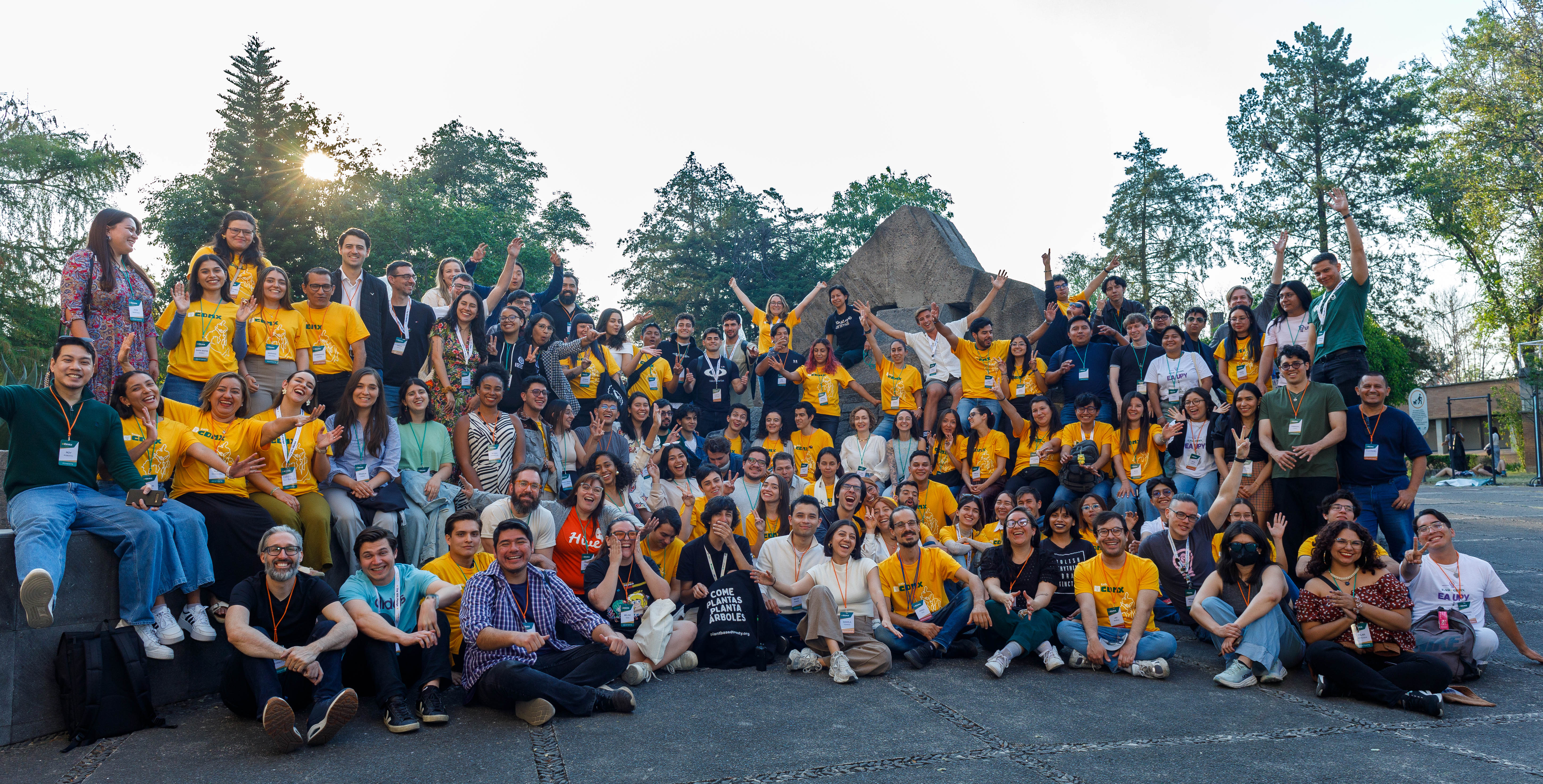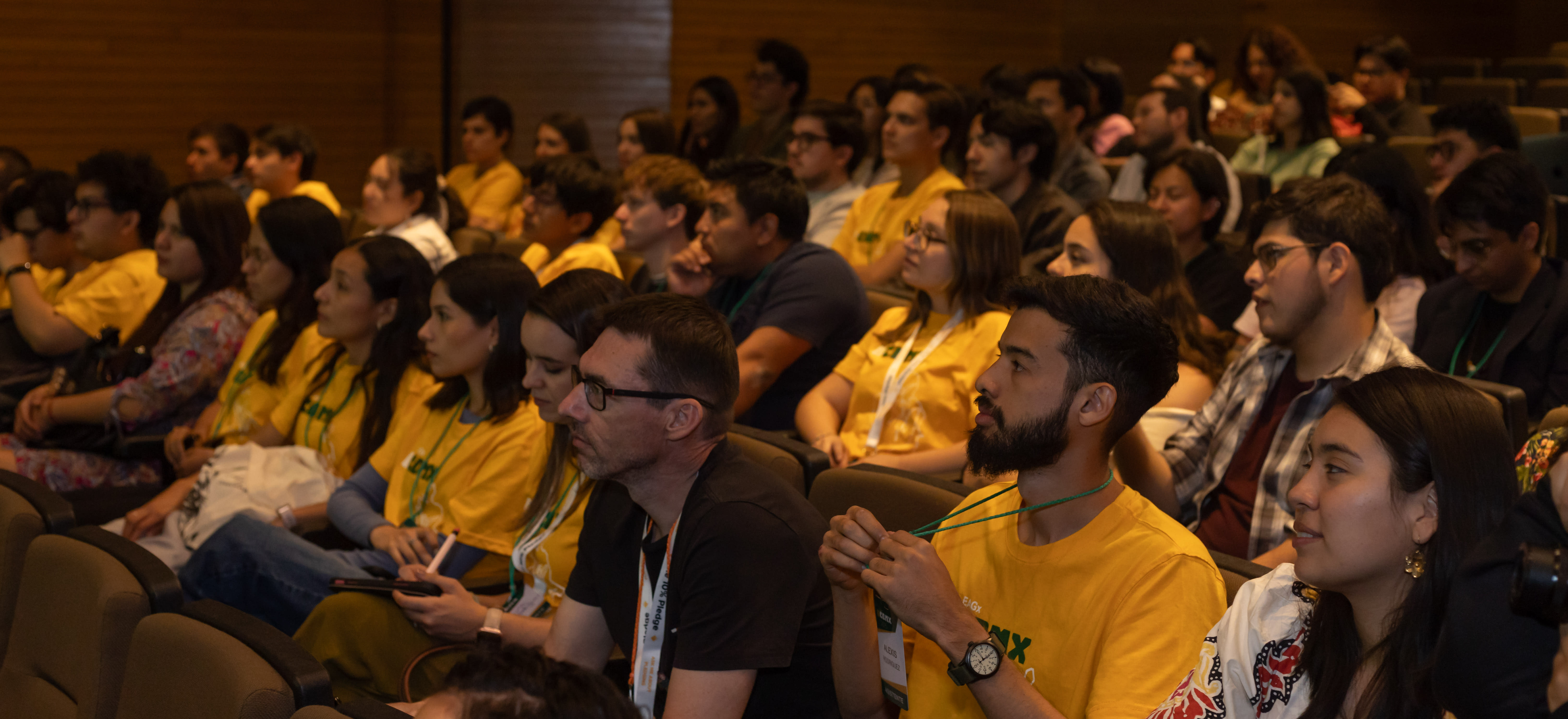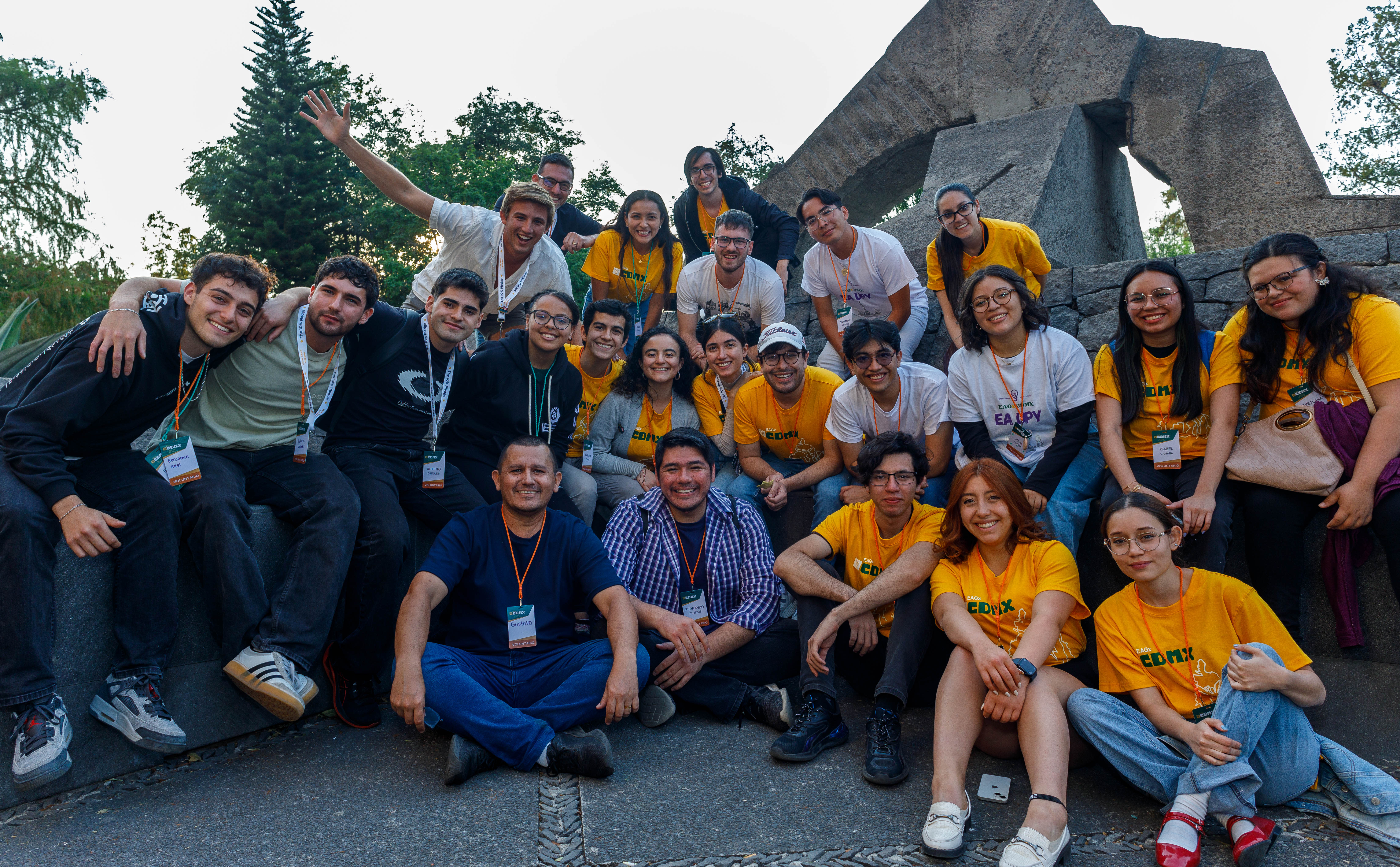Bottom line up front
EAGxCDMX 2025 went well. We generated around 1714 new connections with 182 attendees, at a cost per connection of ~$70 USD. 40% of attendees rated the event as more than 10x better than their counterfactual.

1. Overview
EAGxCDMX 2025 took place from March 14th to 16th at Universum, the UNAM Science Museum in Mexico City. A total of 182 people attended.
This year marked a shift from "EAGxLATAM" to "EAGxCDMX," reflecting a broader strategy to enable more localized events across Latin America. The goal was to prioritize depth of connections over scale, support the community in Mexico, and improve cost-effectiveness by better allocating travel support.
2. Key Metrics
- Total attendees: 182 (vs. 253 in 2024)
- Cost per attendee: 664 USD (vs. 676 USD in 2024)
- Total connections generated: 1714[1] (vs. 3062 in 2024)
- Average new connections per attendee: 9.42 (vs. 12.1 in 2024)
- Average number of connections rated as impactful: 5.22, second highest for an EAG(x) (vs. 4.75 in 2024)
- Estimated cost per connection: $70.5 USD[2]
- Likelihood to recommend (LTR): 8.97 / 10
- 40% of attendees rated the event as >10x better than their counterfactual (vs. 30% in 2024)
- 60% of survey respondents identified as women or non-binary (highest ever for an EAGx)
- 67% of talks were in Spanish, and Spanish became the default language for communication
- 17% of attendees heard about the event through our social media campaign
Most of these numbers are based on the 60 people who completed the post-event survey
Budget breakdown
| Category | Amount (USD) |
|---|---|
| Travel support | $40,450 |
| Organizer pay | $36,135 |
| Food and coffee breaks | $19,794 |
| Venue and related expenses | $17,456 |
| Staff accommodation | $1,241 |
| Staff travel & other expenses | $1,940 |
| T-shirts | $1,520 |
| Other merch & supplies | $1,654 |
| Marketing | $683 |
| Contractors (photos and designs) | $340 |
| Total | $120,849 |
Cost-saving strategies
We implemented several cost-saving measures this year without reducing attendee experience:
- Focused on attracting more local participation to reduce travel support costs
- Removed the volunteer room, which had low usage in previous editions
- Organized the food part of coffee breaks ourselves instead of outsourcing them
- Filmed sessions ourselves instead of hiring a videographer team
- Replaced the afterparty with a pre-event picnic, reducing costs and discouraging alcohol consumption
- Found a new provider to install the tents (which was much cheaper but wasn’t the most reliable)
These decisions allowed us to allocate resources more efficiently while preserving the event’s quality and community feel.
3. What went well

High Attendee Satisfaction
Attendees expressed high overall satisfaction with the event. The average likelihood to recommend was 8.97/10, with many attendees sharing in open feedback that they felt the event struck a good balance between structure and spontaneity. 40% of attendees rated the event as >10x better than their counterfactual use of time and another 38% rated it as notably better (3 to 10x better).
Improved gender diversity
The representation of women and non-binary attendees was the highest yet among EAGx events, with 60% of survey respondents identifying as such. This reflects ongoing efforts to make the EA community more inclusive and welcoming, including intentional choices such as ensuring all meetups were led by women and curating a speaker lineup with a conscious focus on balance and representation.
Content and Language Accessibility
One of the main improvements was language accessibility. 67% of talks were delivered in Spanish, and Spanish became the main language for event communication, making the event more inclusive to local participants. This shift was a direct response to feedback from the local community and allowed many to engage more comfortably with the content.
There was also greater variety in the content offered, with an effort to include topics beyond core EA areas. The agenda was designed to equip attendees with practical tools for making better decisions in both professional and personal contexts. Talks covered career planning, rationality, community building, and mental health, among others.
We also aimed to highlight new voices within the community. 50% of talks were delivered by women, and several first-time speakers were given space to share their knowledge. This helped diversify perspectives and made the event feel more approachable.
While the number of workshops was lower than we had hoped—largely due to speaker preferences for giving talks—this is a known area for improvement. In future editions, we plan to proactively encourage workshop formats earlier in the planning process.
Food and Coffee Breaks
Last year, food quality was rated 4.6/10, and there were logistical challenges with switching providers. This year, we kept the same provider but put a lot of attention in helping them design a custom vegan menu. Attendees rated the food 7.5/10—a significant improvement. There’s still room to grow, but the change was well received.
For coffee breaks, we optimized for both quality and cost. Instead of outsourcing snacks, we sourced drinks from the restaurant and took care of the food ourselves. We partnered with a local vegan bakery and a vegan dessert provider, and we bought fruits and snacks independently. This resulted in better variety and quality at no additional cost.
Volunteers and Team Spirit
Volunteers were well integrated and contributed significantly to the event’s atmosphere. Their warmth and helpfulness were consistently noted by attendees (we received a 9.6/10 rating on "welcomingness"). One indicator of this was the group photo session, where volunteers gathered joyfully—reflecting a strong sense of cohesion.

4. What could be improved
Getting more attendees
While we expected the number of attendees to drop due to the reduction of travel support, we thought that our marketing efforts would be more effective in getting more local leads. The main takeaway is that we should have started advertising the event earlier. Also, some early ads didn’t contain enough information for people unfamiliar with EA. This likely contributed to lower registration rates, especially among newer audiences. Our Marketing Report shares insights and learnings to inform future campaigns. Still, the campaign generated over 500,000 impressions, significantly raising awareness of EA in the region. While conversion to attendance could be improved, we expect some impact to materialize in the future through continued engagement.
Travel support and visa constraints
Compared to previous years, fewer attendees were able to travel from other Latin American countries due to reduced travel funding. Around 50 applicants canceled due to funding limitations.
However, this trade-off enabled the launch of a new EAGx event in Brazil. We believe CEA’s decision to reallocate travel support—reducing it for EAGxCDMX in order to fund multiple events in the region—will ultimately foster more connections across Latin America than a single, larger event would have.
Visa issues also posed challenges for participants from some countries. To address this in the long term, we’re exploring the option of creating a local legal entity that could streamline visa invitation processes.
Workshops and interactive formats
As mentioned, the number of workshops was lower than ideal. Many speakers preferred to give talks, which limited interactivity. We plan to address this by signaling the importance of hands-on formats earlier and more consistently in the speaker onboarding process. Some attendees also found the sessions too introductory so we’ll keep that in mind for future editions.
5. Looking ahead
In the coming months, we plan to assess how durable the connections formed at the event were. This follow-up will help us better understand the long-term value of EAGx’s in the region and inform improvements for future editions.
We’re also excited to continue supporting the Latin American community with a more localized and cost-effective model: smaller regional events (EAGx’s and EA Summits) plus a potential annual virtual gathering. We believe this approach will foster long-lasting, impactful connections, more accessible events, and broader participation across the region.
- ^
We estimate total connections by multiplying the average number of new connections (from survey responses) by total attendees. While this double-counts interactions (e.g., if A and B both report the same connection), we use this method for consistency with other EAG(x) events, as it reflects the value each person places on their connections.
Note: For EAGxLATAM 2023 and 2024, we divided this number by two to avoid double-counting, but for EAGxCDMX 2025 we've aligned with the standard EAG(x) method to enable better comparisons.
- ^
Unlike last year, organizer's pay is now included in the cost per connection
